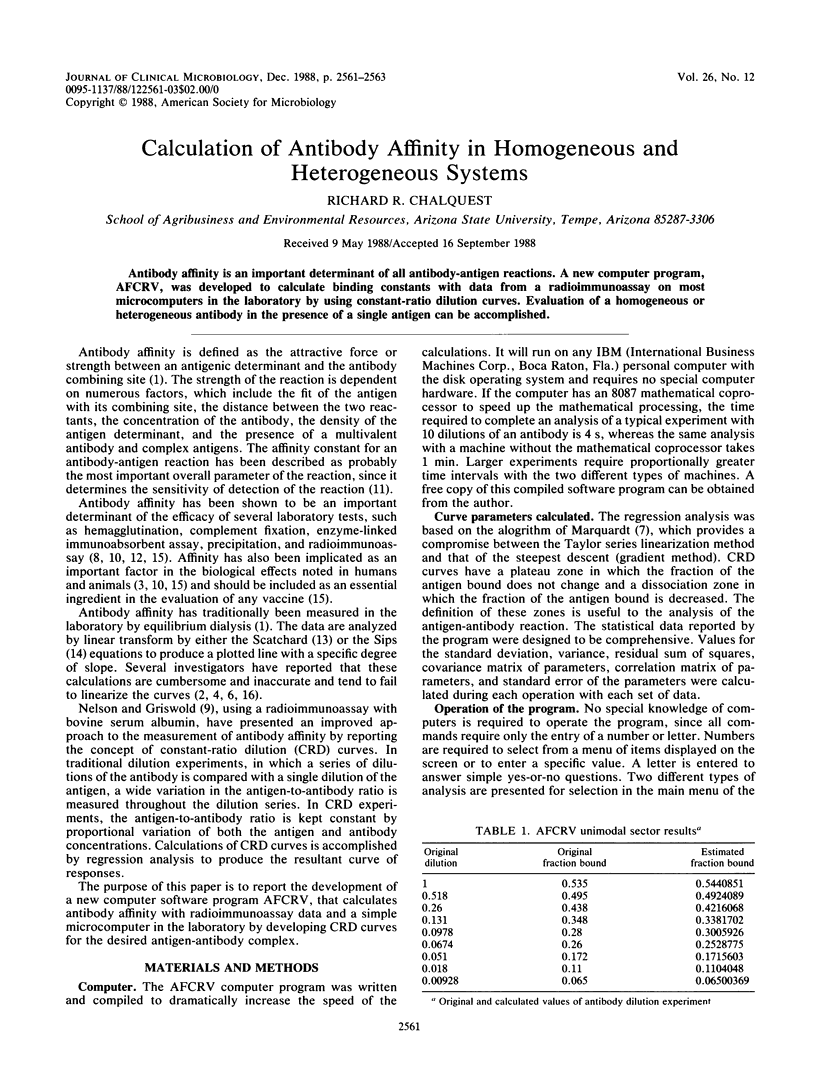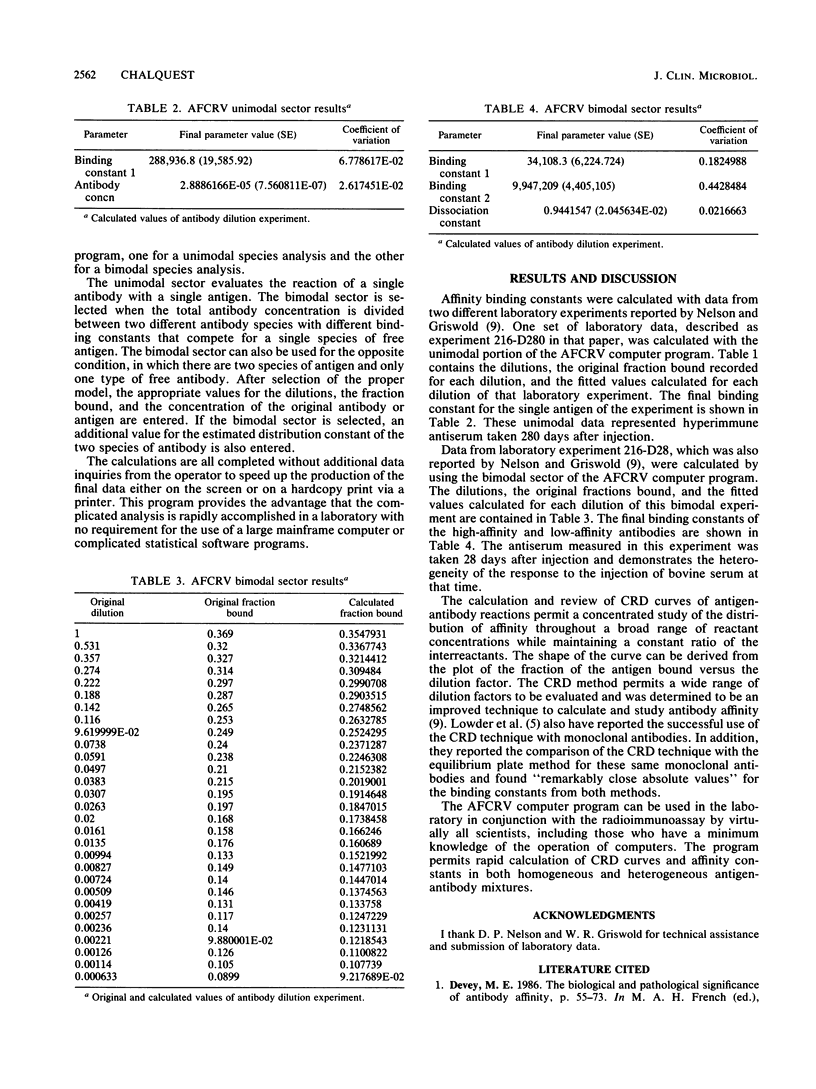Abstract
Antibody affinity is an important determinant of all antibody-antigen reactions. A new computer program, AFCRV, was developed to calculate binding constants with data from a radioimmunoassay on most microcomputers in the laboratory by using constant-ratio dilution curves. Evaluation of a homogeneous or heterogeneous antibody in the presence of a single antigen can be accomplished.
Full text
PDF


Selected References
These references are in PubMed. This may not be the complete list of references from this article.
- Klotz I. M. Numbers of receptor sites from Scatchard graphs: facts and fantasies. Science. 1982 Sep 24;217(4566):1247–1249. doi: 10.1126/science.6287580. [DOI] [PubMed] [Google Scholar]
- Light K. E. Analyzing nonlinear scatchard plots. Science. 1984 Jan 6;223(4631):76–78. doi: 10.1126/science.6546323. [DOI] [PubMed] [Google Scholar]
- Lowder J. N., Meeker T. C., Campbell M., Garcia C. F., Gralow J., Miller R. A., Warnke R., Levy R. Studies on B lymphoid tumors treated with monoclonal anti-idiotype antibodies: correlation with clinical responses. Blood. 1987 Jan;69(1):199–210. [PubMed] [Google Scholar]
- Mariani M., Neri P., Cianfriglia M., Armellini D., Barbarulli G., Antoni G. Characterization of monoclonal antibodies against human chorionic somatomammotropin: competitive screening and determination of the affinity constants. J Immunol Methods. 1984 Jun 8;71(1):43–48. doi: 10.1016/0022-1759(84)90204-7. [DOI] [PubMed] [Google Scholar]
- Moyle W. R., Lin C., Corson R. L., Ehrlich P. H. Quantitative explanation for increased affinity shown by mixtures of monoclonal antibodies: importance of a circular complex. Mol Immunol. 1983 Apr;20(4):439–452. doi: 10.1016/0161-5890(83)90025-1. [DOI] [PubMed] [Google Scholar]
- Nelson D. P., Griswold W. R. Computer modeling of the reaction between antigen and heterogeneous antibody in fixed antigen excess: a new method for measuring antibody affinity. J Clin Lab Immunol. 1986 Oct;21(2):101–106. [PubMed] [Google Scholar]
- Nimmo G. R., Lew A. M., Stanley C. M., Steward M. W. Influence of antibody affinity on the performance of different antibody assays. J Immunol Methods. 1984 Aug 3;72(1):177–187. doi: 10.1016/0022-1759(84)90446-0. [DOI] [PubMed] [Google Scholar]
- Péterfy F., Kuusela P., Mäkelä O. Affinity requirements for antibody assays mapped by monoclonal antibodies. J Immunol. 1983 Apr;130(4):1809–1813. [PubMed] [Google Scholar]
- Steward M. W., Lew A. M. The importance of antibody affinity in the performance of immunoassays for antibody. J Immunol Methods. 1985 Apr 22;78(2):173–190. doi: 10.1016/0022-1759(85)90074-2. [DOI] [PubMed] [Google Scholar]
- Van Heyningen V., Brock D. J., Van Heyningen S. A simple method for ranking the affinities of monoclonal antibodies. J Immunol Methods. 1983 Aug 26;62(2):147–153. doi: 10.1016/0022-1759(83)90000-5. [DOI] [PubMed] [Google Scholar]


